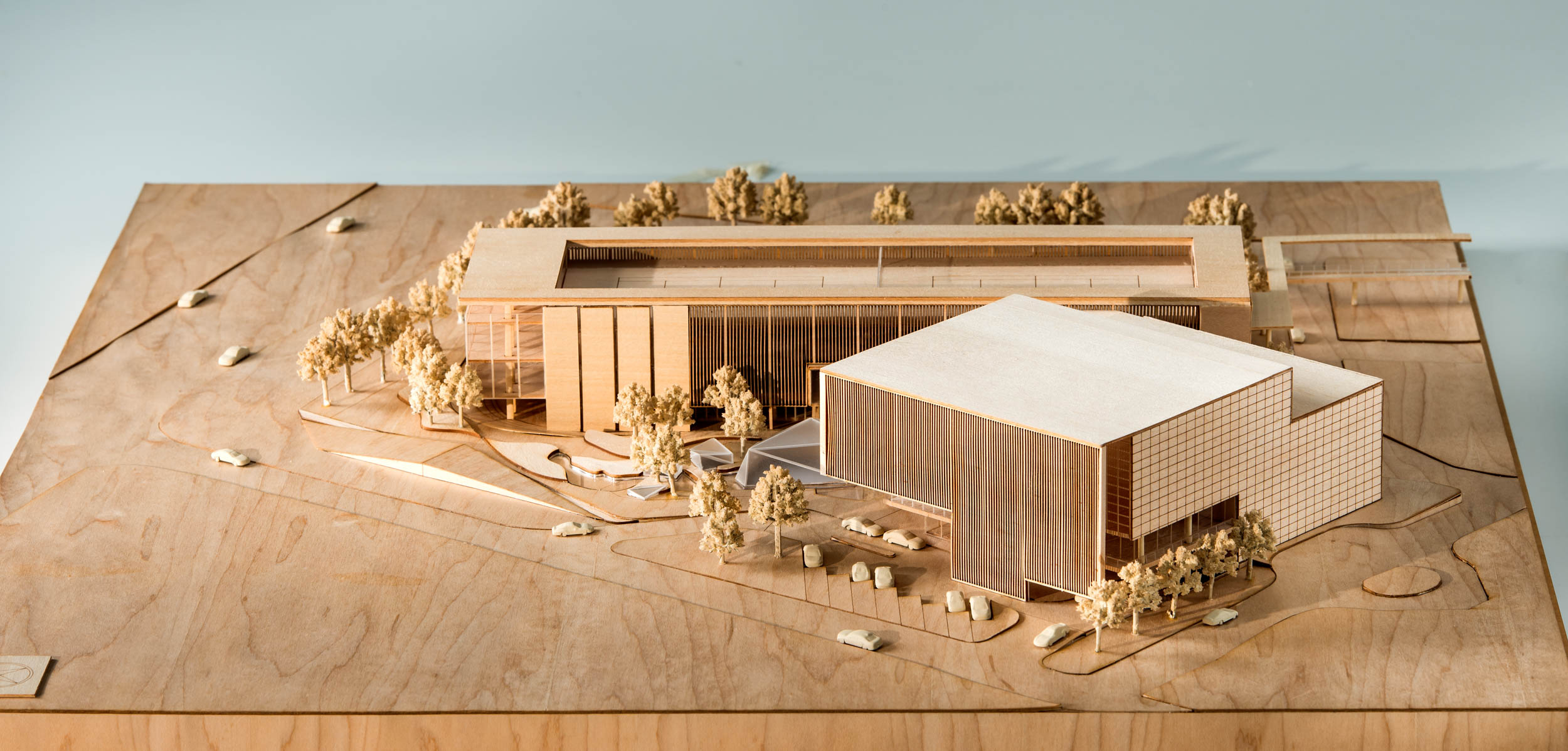

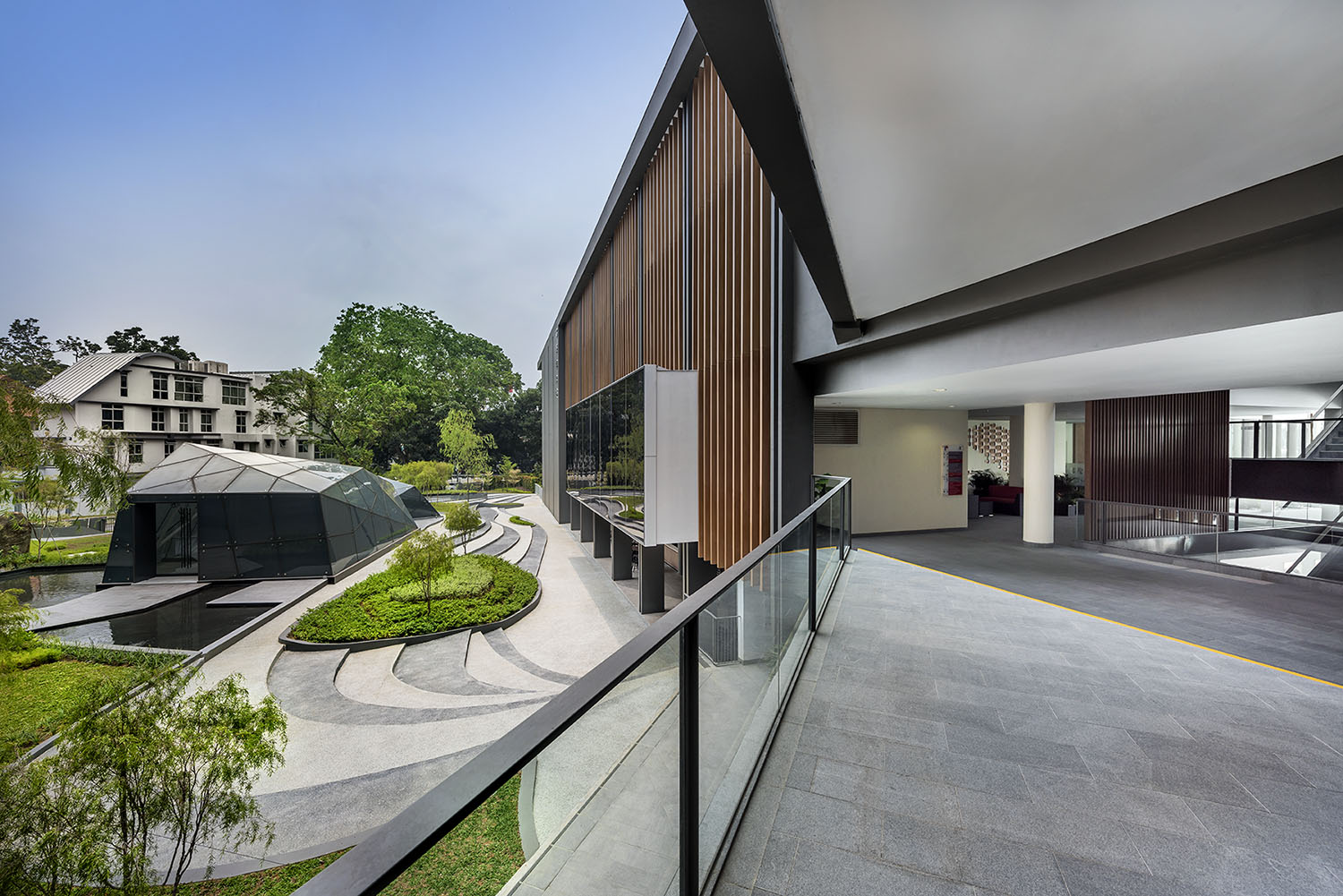
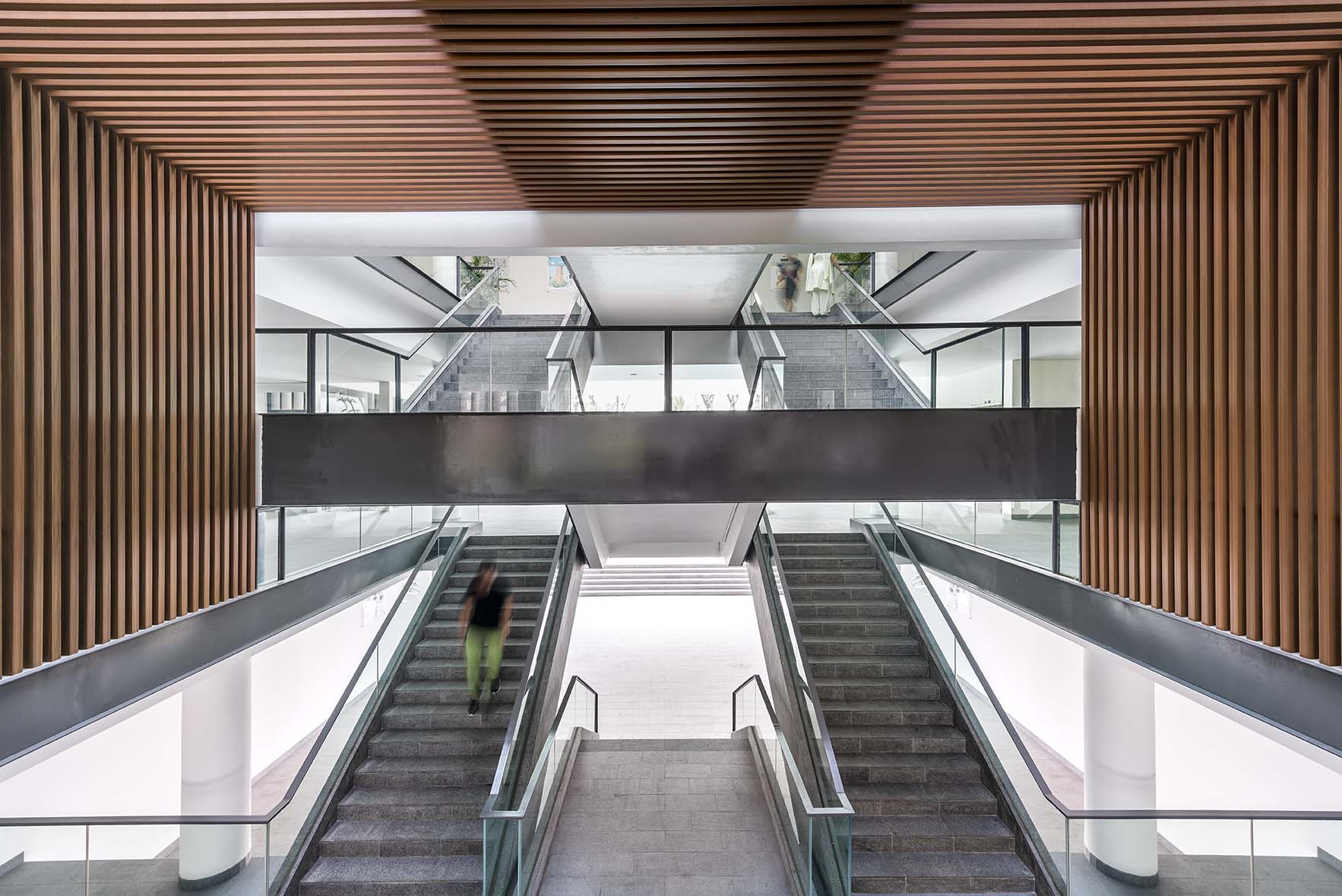
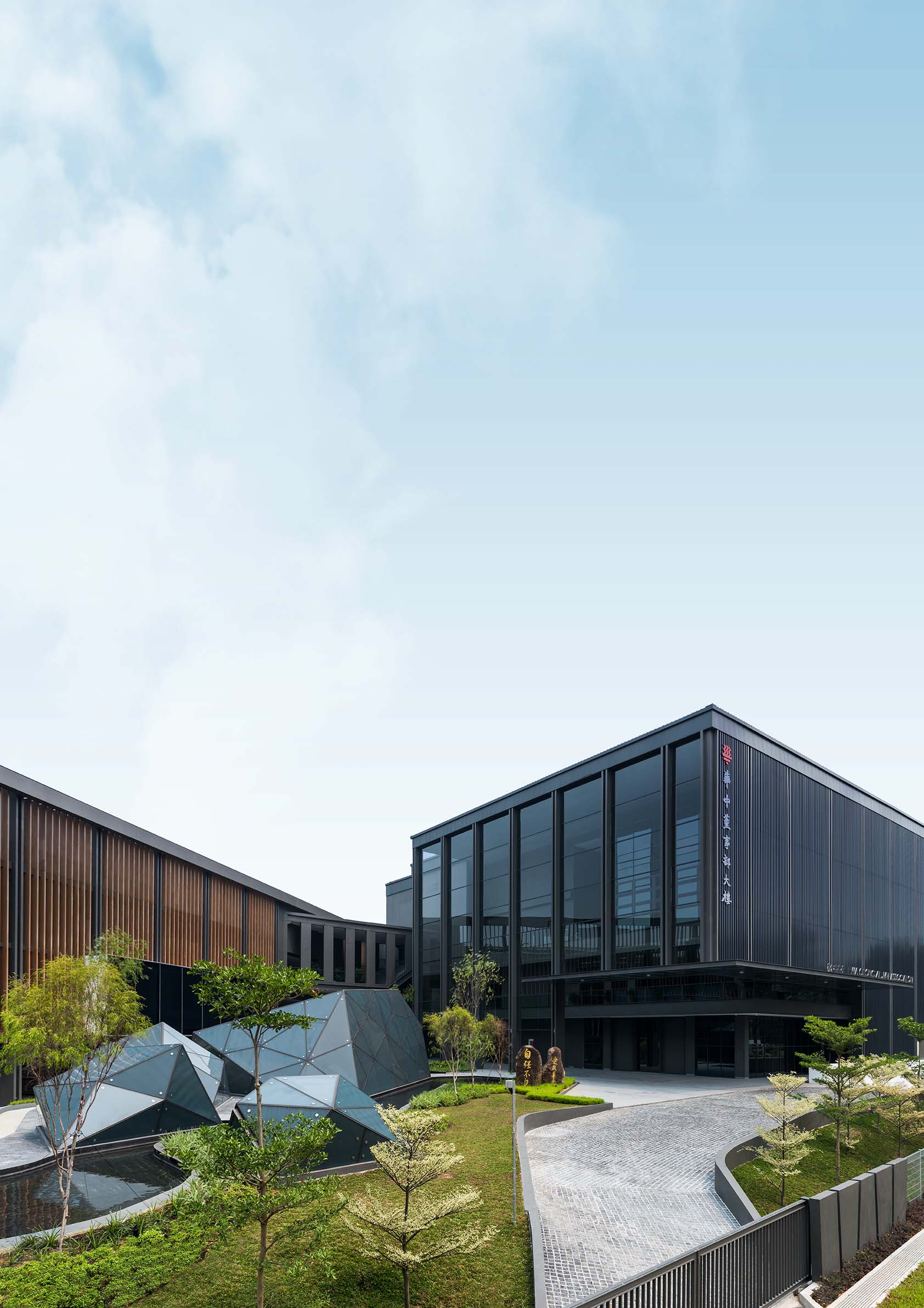
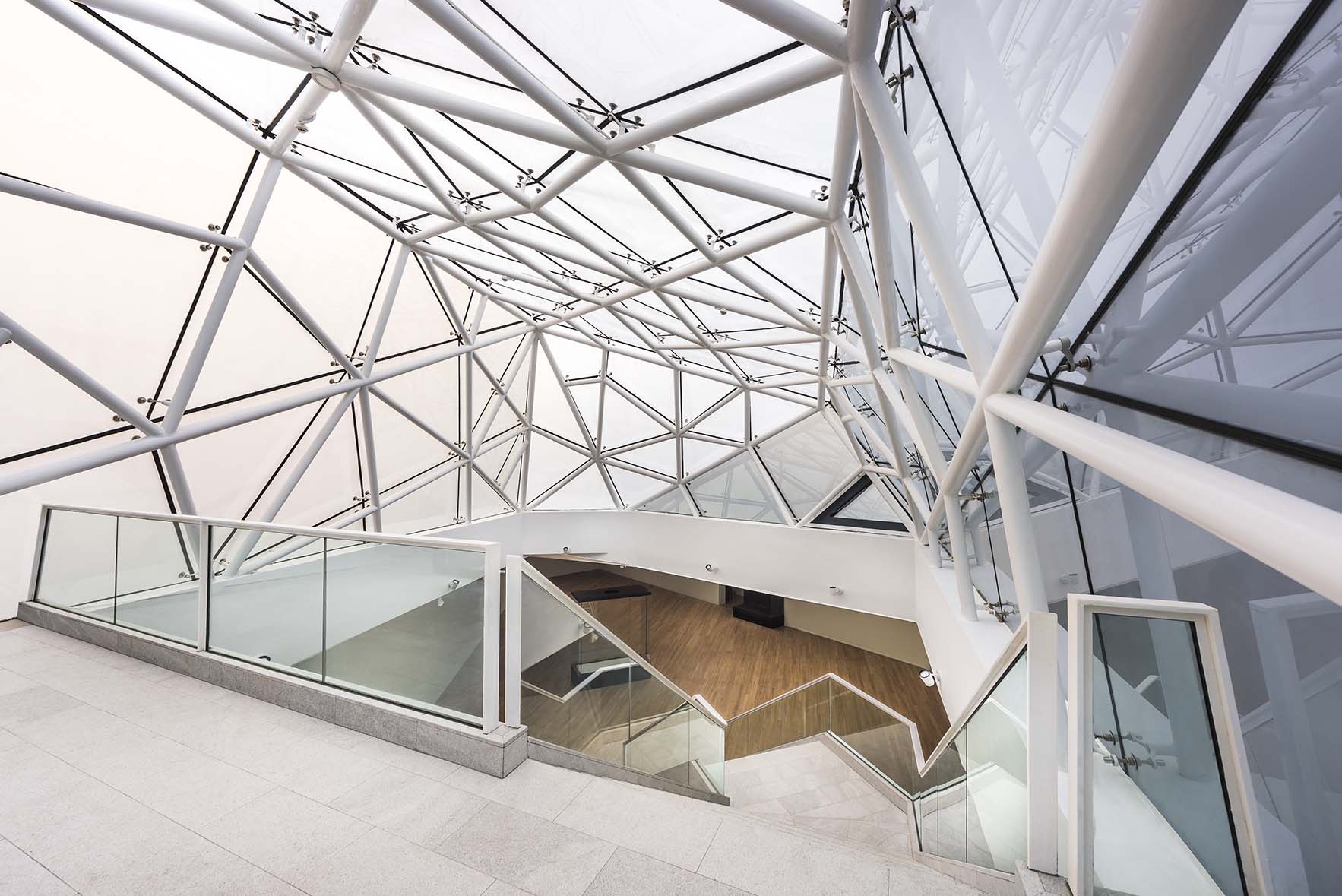
Hwa Chong International School
BACKGROUND
Shan Shui Shi Lin 山水石林 was conceived as the result of a closed design competition, as the presiding Board of Directors were looking for a building that went beyond pure functionality. The competition brief called for an A&A to the existing alumni block to house Hwa Chong International School, as well as a new extension block for the relocation of alumni facilities.
THE CONCEPT
This project at Hwa Chong Institution was conceived as a design competition as the presiding Board of Directors were looking for a building that went beyond pure functionality.
Hwa Chong Institution is the oldest and one of the most well-respected Chinese institutions in Singapore. Naturally, it historically has had, and continues today to have strong affinities to Chinese culture and traditions. During one of the first site visits, we noticed the existing alumni block appeared ‘Chinese’ in its character, and it was immediately evident that this was due to the liberal adoption of typically traditional Chinese architectural elements that adorned the building. Having observed this, it became key for us, instead, to explore ways in which such Chinese elements and motifs can be reinterpreted and reimagined in the context of contemporary architecture.
Chinese landscape painting - shan shui hua - is one of the most important art forms in Chinese culture, engrained in history. The main principle fundamental to shan shui hua is its overall composition of background, mid-ground, and foreground, creating a more layered visual experience.
- Background elements - often taking the form of barely-visible mountain silhouettes in the distant;
- Mid-ground elements - nearer mountain-scape or a cliff with a defined outline, often with winding paths or streams for an enhanced sense of depth;
- Foreground elements - made up of human-scale elements such as rock-scape, poets or shepherds, small pavilions, or bridges over streams.
The background, mid-ground and foreground composition leads the viewer’s eyes from the far background, with the mid-ground guiding the eyes to roam the scene, and eventually ending in the foreground as the focus.
With the compositional techniques of shan shui hua as the driving force behind the architecture, everything else, from addressing the existing site and the internal planning logic of planning, unfolded naturally. Imagined as a Chinese landscape painting, the project is thus titled Shan Shui Shi Lin.
Project Year | Completed 2015
Location | Bukit Timah, Singapore
Photographer | Edward Hendricks
Expertise | Architecture
BACKGROUND
Shan Shui Shi Lin 山水石林 was conceived as the result of a closed design competition, as the presiding Board of Directors were looking for a building that went beyond pure functionality. The competition brief called for an A&A to the existing alumni block to house Hwa Chong International School, as well as a new extension block for the relocation of alumni facilities.
THE CONCEPT
This project at Hwa Chong Institution was conceived as a design competition as the presiding Board of Directors were looking for a building that went beyond pure functionality.
Hwa Chong Institution is the oldest and one of the most well-respected Chinese institutions in Singapore. Naturally, it historically has had, and continues today to have strong affinities to Chinese culture and traditions. During one of the first site visits, we noticed the existing alumni block appeared ‘Chinese’ in its character, and it was immediately evident that this was due to the liberal adoption of typically traditional Chinese architectural elements that adorned the building. Having observed this, it became key for us, instead, to explore ways in which such Chinese elements and motifs can be reinterpreted and reimagined in the context of contemporary architecture.
Chinese landscape painting - shan shui hua - is one of the most important art forms in Chinese culture, engrained in history. The main principle fundamental to shan shui hua is its overall composition of background, mid-ground, and foreground, creating a more layered visual experience.
- Background elements - often taking the form of barely-visible mountain silhouettes in the distant;
- Mid-ground elements - nearer mountain-scape or a cliff with a defined outline, often with winding paths or streams for an enhanced sense of depth;
- Foreground elements - made up of human-scale elements such as rock-scape, poets or shepherds, small pavilions, or bridges over streams.
The background, mid-ground and foreground composition leads the viewer’s eyes from the far background, with the mid-ground guiding the eyes to roam the scene, and eventually ending in the foreground as the focus.
With the compositional techniques of shan shui hua as the driving force behind the architecture, everything else, from addressing the existing site and the internal planning logic of planning, unfolded naturally. Imagined as a Chinese landscape painting, the project is thus titled Shan Shui Shi Lin.
